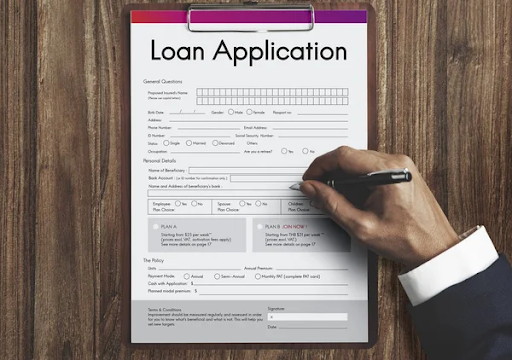A personal loan is a type of loan that provides you with the cash you need to cover a wide variety of expenses such as education, debt consolidation, home improvements, and more. Whether you’re looking for extra money to pay off bills or make an important purchase, taking out a personal loan can help get the job done. With competitive interest rates and flexible repayment terms, personal loans make it easy to manage your finances while helping you achieve your financial goals. In this guide, we’ll explain everything you need to know about personal loans so that you can make an informed decision when considering taking one out.

How to Apply for a Personal Loan
Applying for a personal loan involves several steps to ensure you get the best loan terms and approval. Here’s a step-by-step guide on how to apply for a personal loan in Singapore:
- Check Your Credit Score: Before you apply, it’s essential to know your credit score. Lenders use your credit score to determine your creditworthiness. A higher credit score usually leads to better loan terms, such as lower interest rates.
- Determine Your Loan Amount: Calculate how much money you need and what you can afford to repay. Don’t borrow more than you need, as you’ll have to pay interest on the entire loan amount.
- Research Lenders: Shop around for lenders to find the one that offers the best terms and interest rates. You can consider banks, credit unions, online lenders, and peer-to-peer lending platforms. Read reviews, compare interest rates, and check for any hidden fees.
- Gather Required Documents: Lenders will typically require documentation to verify your identity, income, and financial history. Common documents include:
- Proof of identity (driver’s license, passport, etc.)
- Proof of income (pay stubs, tax returns, bank statements)
- Employment information
- Social Security Number or Tax Identification Number
- Proof of residence (utility bills or lease agreements)
- Fill Out the Application: Most lenders offer online applications. Fill out the application form accurately and provide all necessary information. Double-check for any errors before submitting.
- Choose Your Loan Terms: You may have the option to choose the loan term (e.g., 1 year, 3 years, 5 years) and the type of interest rate (fixed or variable). Consider your budget and financial goals when making these choices.
- Wait for Approval: The lender will review your application and credit history. This process may take a few minutes to a few days, depending on the lender. Some lenders offer instant approvals.
- Review the Loan Offer: If approved, carefully review the loan offer, including the interest rate, loan amount, term, and any fees. Make sure you understand all terms and conditions before accepting the loan.
- Provide Additional Information: The lender may request additional documentation or information during the underwriting process. Be prepared to provide this promptly to avoid delays.
- Accept the Loan: Once you are satisfied with the loan offer and have met all the lender’s requirements, accept the loan by signing the agreement. You may need to do this electronically or in person, depending on the lender.
- Receive Funds: After accepting the loan, the lender will typically disburse the funds to your bank account. The timing can vary but is usually within a few business days.
- Make Payments: Make sure you understand the repayment schedule and start making timely payments. Setting up automatic payments can help you avoid missing due dates.

Remember that personal loans are a financial responsibility, and you should borrow only what you can afford to repay. Additionally, be cautious about predatory lenders and scams, and always read the fine print of any loan agreement before signing. If you have any doubts or questions, it’s a good idea to consult with a financial advisor or credit counselor.
Conclusion
In conclusion, a personal loan can be a great way to finance large purchases or consolidate debt. While the interest rates and fees associated with personal loans may be higher than other forms of credit, they can still provide a more affordable option in certain circumstances. Before taking out a loan, it is important to consider all your options and research potential lenders thoroughly.
Interesting Related Article: “6 Tips That Can Help You Effectively Repay Your Personal Loan“

